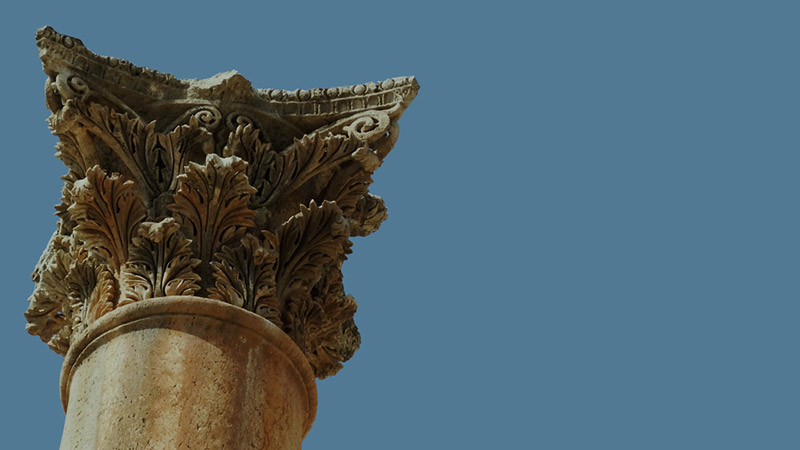More Results
Showing 12 of 144
Articles

The Salt of the Earth
The City of SardisLocated on Mount Tmolus in southern Turkey, the city of Sardis stood at the crossroads of Asia Minor, the most prosperous, powerful, fertile, and pagan province of the entire Roman Empire. First-century Sardis had a unique blend ...
MORE
The Time Had Fully Come
Qumran - The SiteThe wilderness community of Qumran served as home for the Essenes, a Jewish sect existing in Jesus' day.Qumran served as a study site for the Essenes, a Jewish sect existing in Jesus' day. Located at the edge of the Judea Wilderne...
MORE
The Wages of Sin
A Great CityLachich guarded the southern approach to Jerusalem. It's impressive ruiins remind us that thousands of people once called this strategic city their home.Once one of Israel's largest cities, Lachish covers an impressive eighteen acres. ...
MOREEncyclopedia

The Meaning of the Rock
Throughout church history, there has been discussion and debate on exactly what Jesus meant when he said, 'on this rock I will build my church' (Matt. 16:28). The cliff face in Caesarea Philippi that was used for centuries in idol worship provides...
MORE
The Philistines
The Old Testament frequently mentions the Philistines, a pagan people who clashed with God's children in the Promised Land. The Bible itself provides many interesting facts about Philistine culture, and archaeological discoveries have added to our...
MORE
The Seeds of Revolt
The Seeds of RevoltThe Seeds After the Romans began their occupation of Judea in 64 BC, the Jews became divided on how to respond.The religious leaders, particularly the Pharisees, believed the Messiah would come from the Jewish people and make Is...
MORE
The Shephelah
Shephelah is a Hebrew word meaning "low" and is usually translated "lowlands" or "foothills." The term refers to a twelve to fifteen-mile wide region in Judea, comprised of foothills that are located between the coast...
MORE
The Temple Mount at Jerusalem
God despised the Canaanite high places where pagan worship was carried out. His orders to the Israelites were to destroy them. Yet God communicated with his people through their culture. He allowed them to establish high places where he could meet...
MORE
The Temple of Apollo in the Hierapolis
Located on the main street between the theater and a sacred pool, this forty-by-sixty-foot temple was dedicated to the supposed god of light, Apollo. The entrance faced west and was approached by a broad flight of stairs.Beneath the Temple of Apol...
MORE
The Theater at Caesarea
Herods' love of Hellenistic culture and his desire to introduce it to the Jewish nation is illustrated clearly by the theater at Caesarea. Apparently, this structure was built outside the city because its obscene and bawdy performances may have cr...
MORE
The Theater at Ephesus
In the world of the early believers, the theater was a significant institution for communicating the Hellenistic view of the world. Every major city in the Roman world had a theater, and the theater in Ephesus was spectacular. The Greek king Lysim...
MORE
The Theater at Hierapolis
The first-century theater of Hierapolis, one of the best-preserved theaters in Asia, clearly demonstrates the city's sophistication at the time Epaphras founded a church there. The carvings below the stage, which was twelve feet high, are in remar...
MORE

















